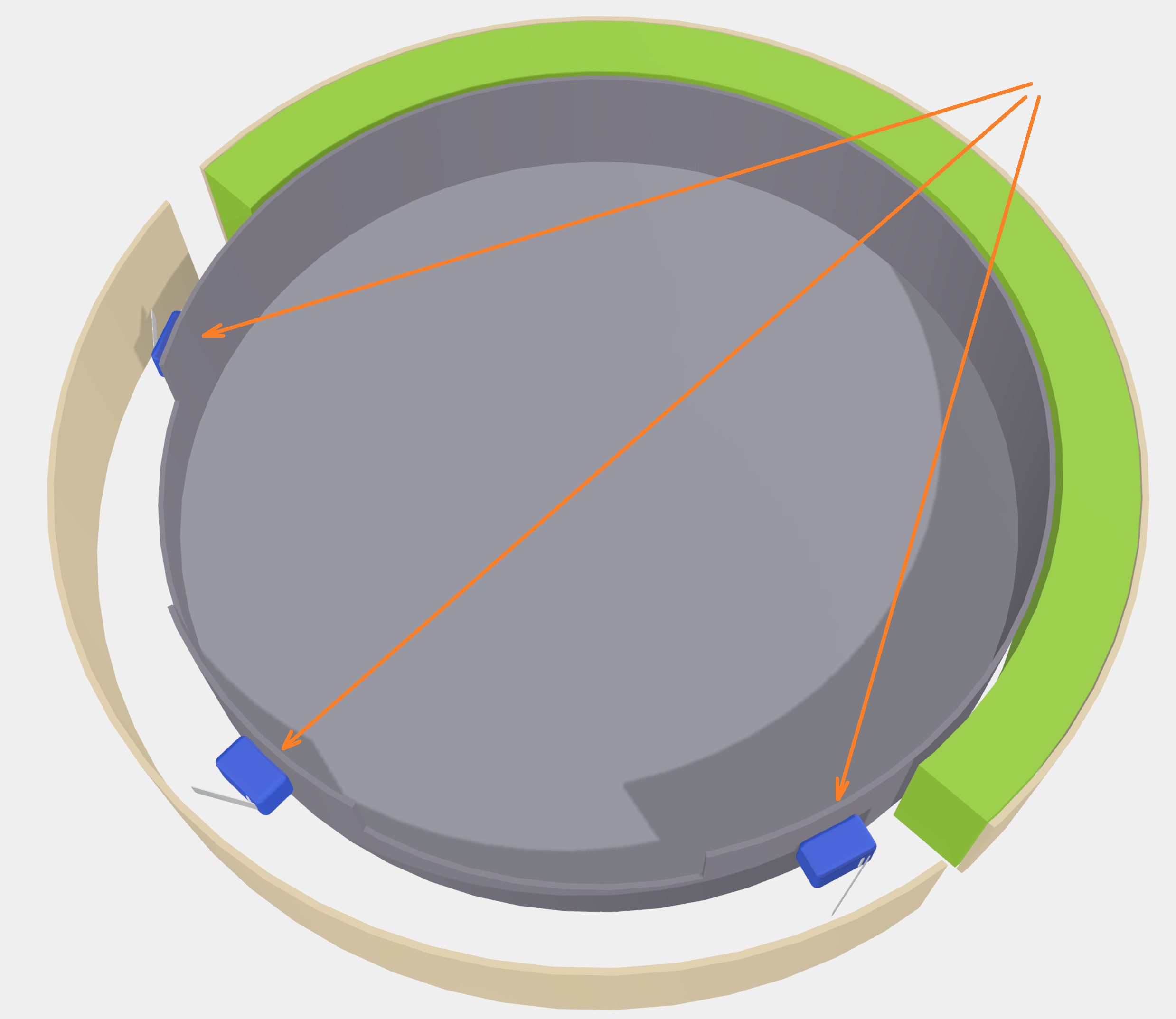SBAA577 March 2023 TMAG5170 , TMAG5273
2 Traditional Way of Collision Detection in Vacuum Robot
 Figure 2-1 Switch on Vacuum Robot
Figure 2-1 Switch on Vacuum RobotThe traditional way of detecting collisions is by using switches, mechanical switches or infrared receiver and transmitter pairs can be used as shown in Figure 2-1. To ensure that the switch signal is working reliably, the collision shell, which is part of the chassis, should compress deeply so that switch contacts may completely connect and release. As a result of the mentioned mechanical constraints, the collision noise in the event of a crash is inevitable.
In most instances, the mechanism is not simple as pictured above. These systems tend to be more complex and customized, which leads to a higher production cost. Another challenge a vacuum robot must overcome is harsh working environment. Cleaning products must operate appropriately in areas where various contaminants could be present. These contaminants include but are not limited to dust particles, oil, sewage, and even liquids such as juice or sauce. In order for the system to detect the direction of a collision, multiple switches or sensors are strategically placed to detect various directions. Using multiple sensors can lead to an increase in material and manufacturing cost.